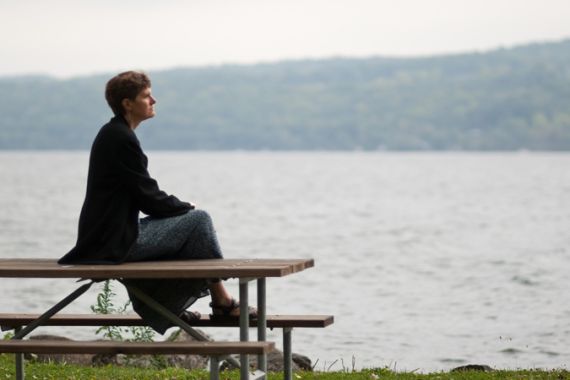
Living Downstream
An American ecologist probes the effects of chemical industry polluting water supplies, while battling cancer.
Editor’s note: This film is no longer available online.
Filmmaker: Chanda Chevannes
Keep reading
list of 4 itemsBoeing hit with 32 whistleblower claims, as dead worker’s case reviewed
US imposes new sanctions on Iran after attack on Israel
A flash flood and a quiet sale highlight India’s Sikkim’s hydro problems
Sandra Steingraber is an American ecologist whose books reach thousands of people. Diagnosed at an early age with cancer, she joined a long line of patients in her family – only, Sandra was adopted.
She embarked on a quest to find the link between cancer and the environment and to campaign against the chemical industry contaminating water supplies.
FILMMAKER’S VIEW
I first read Sandra Steingraber’s book, Living Downstream, when I was just out of high school. I read it ravenously, was deeply moved by it and then put it on my bookshelf.
From the first chapter I felt that it was so cinematic that it would make an incredible film. And, although I knew that I wanted to be a filmmaker, I had never made a film before and it did not occur to me to make this film myself.
I returned to the book a couple of years later as a student in film school. Again, I read it, was even more moved and educated by it – and placed it back on my bookshelf.
A couple of years later, while working for a well-respected documentary production company in Toronto, I picked up the book – and fell in love with it all over again.
I saw in it all the things that would make for a great film: a compelling character, a lyrical tone, beautiful visuals, and a focus on the human cost of cancer.
After reading the book for the third time, I did not put it back on my bookshelf.
Instead I placed it on my desk and worked up the nerve to call Sandra. I found two or three different phone numbers for her and left tense messages on them all. We exchanged emails, had a few indepth phone conversations and, after a bit of convincing, Sandra agreed to participate as a subject in the film.
It was several more years until the film was financed. In the intervening years, I read the book three more times. Sandra moved and her father died. I married, lived in Africa with my husband and fell pregnant. Time was moving on and life was changing for us both. But the promise of the film was a constant presence in our lives.
We finally began principal photography in July 2008. Initially, one of my biggest worries about the film was whether its story would have enough immediacy. In the book, Sandra tells her own story retrospectively. She was 20 when she was diagnosed with bladder cancer. Today, she is 50. How relevant would a 30-year-old cancer story be? What is the reason to discuss a diagnosis that happened a lifetime ago?
But what I discovered in working with Sandra is that cancer never really leaves you – even when you are ‘cured’. She told me once that she thinks about cancer every day and will for the rest of her life. Fifty to seventy per cent of bladder cancers recur, so Sandra’s thoughts and worries about her health are not unwarranted. Hers is not a story that happened 30 years ago. Hers is a story that is happening every day.
During filming, we had a glimpse into this reality. A week after our crew filmed Sandra’s annual cystoscopy – a procedure in which a tube is inserted into the bladder to screen for cancer – Sandra received a call from the nurse in her urologist’s office. The urine sample that had been taken during the procedure had been analysed and found to contain abnormal cell clusters and blood. With that phone call, Sandra was catapulted into a period of ambiguity known as watchful waiting. She was not certain of her health: she was neither a cancer patient, nor was she ‘free and clear’ of the disease.
I spent a lot of time wondering how the story would end. As a filmmaker, I want to be able to see the final frame of the film. Would Sandra go for a series of tests and then be declared healthy again? Or would she become yet another bladder cancer patient to experience a recurrence? As Sandra continued through her period of watchful waiting, I too was watching, and waiting.
But as I talked to Sandra more during this time, I realised that there can never really be an ending to this story. As storytellers, we filmmakers look for satisfying ways to end our films. It is nice to have a feeling that everything has been wrapped up before the audience leaves the theatre. But I realised that I had an opportunity to communicate a larger reality with this film. That is: if you are a cancer survivor, nothing is ever really wrapped up. Even when the test results come back normal, there is another test to be done again the following year. Sandra will visit her urologist for her cystoscopies every year. She will worry every time. She will think about cancer every day for the rest of her life.
I have learned a lot during the course of filming – about Sandra, about cancer and about myself as a filmmaker. I have watched Sandra’s book transform from the page to the screen, in my hands and the hands of my crew. And, in a way, this project has come full circle.
Filmmaking and writing are very different endeavours. We have worked hard to capture something new with this film, and to maintain all the lyricism, beauty and humanity of the book. I hope we have succeeded.